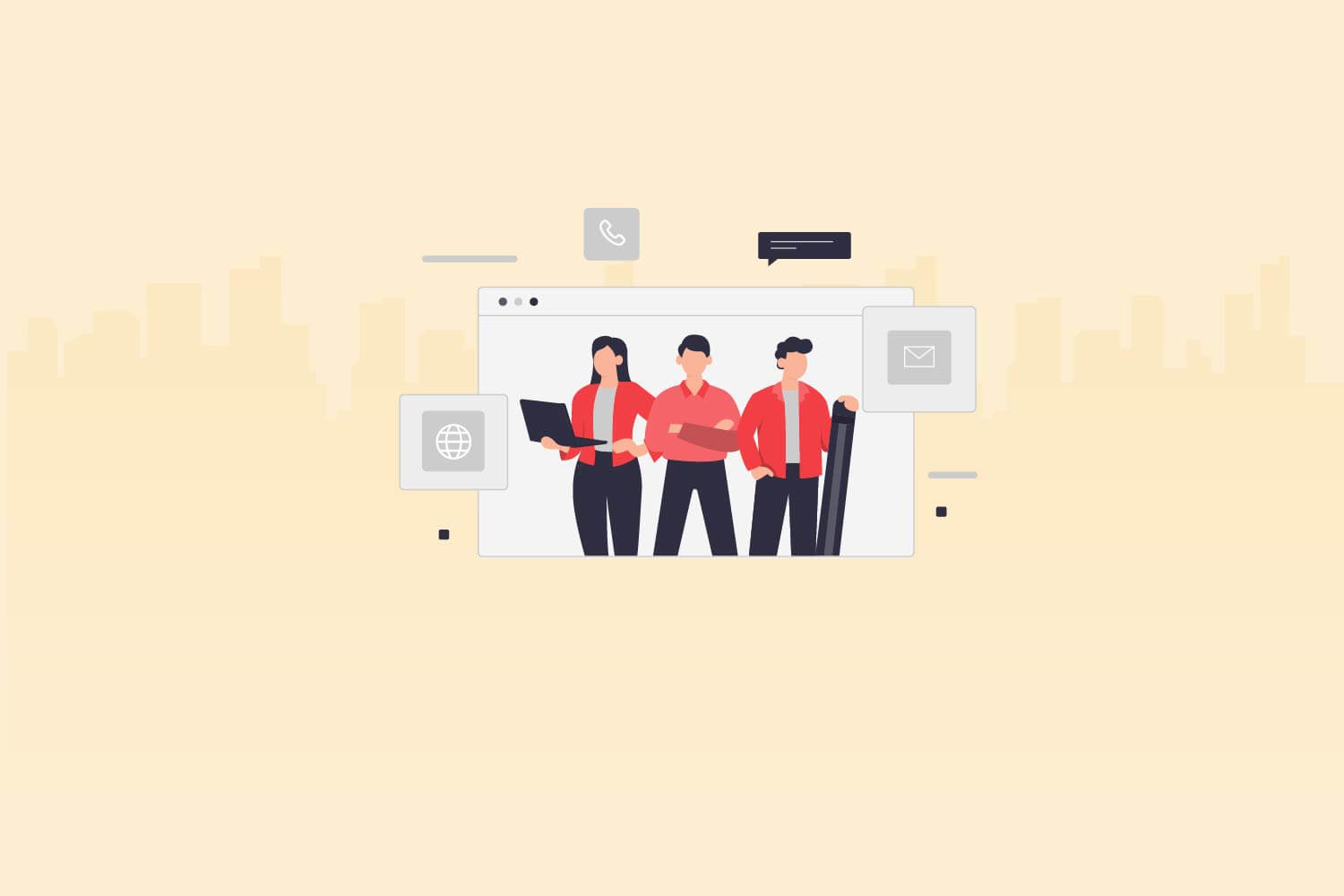In the ever-evolving landscape of today’s business world, organizations are tasked with navigating a complex web of challenges and opportunities. Amidst this dynamic environment, one strategic practice stands out as a beacon of preparation and growth: workforce planning. As businesses strive to remain competitive and adaptable, they recognize the crucial role of aligning their workforce with their strategic objectives. Workforce planning is not merely about staffing and recruitment; it’s a holistic approach that ensures your organization is equipped with the right talent, skills, and capabilities to not only survive but thrive.
Organizations that follow a structured workforce planning process are 2.5 times more likely to achieve their strategic goals, as found in research published in the Harvard Business Review.
In this blog, we embark on a journey through the essential steps of workforce planning, unravelling its significance in shaping an organization’s future. From assessing organizational needs and analyzing the current workforce to forecasting future demands and implementing strategies, we will explore how each phase contributes to building a resilient, agile, and forward-looking workforce. Let’s delve into the intricacies of workforce planning and understand how this strategic process can propel your business towards sustainable success.
Assessing organizational needs and goals in workforce planning
Workforce planning serves as the cornerstone of a well-functioning organization, and its journey begins with a comprehensive assessment of organizational needs and goals. This critical step forms the bedrock upon which all subsequent decisions and strategies are built, ensuring that the workforce aligns seamlessly with the broader business objectives.
In this phase, organizations delve deep into understanding their present state and envisioning their desired future. It involves a holistic analysis of various factors that shape workforce requirements, including projected growth, market trends, and technological advancements. By connecting the dots between the internal and external landscape, businesses can lay the foundation for an effective workforce planning strategy.
Central to this assessment is the identification of key drivers that will influence the organization’s workforce needs. Whether it’s expanding into new markets, adopting innovative technologies, or responding to regulatory changes, every facet of the business that impacts human resources must be examined. Moreover, this process involves evaluating the current workforce composition, strengths, and weaknesses to identify areas that require attention.
Assessing organizational needs and goals goes beyond quantitative data. It requires a qualitative understanding of the organization’s culture, values, and future aspirations. By embracing a holistic approach, organizations can craft a workforce plan that not only addresses the immediate needs but also positions them for long-term success.
The first step of workforce planning is akin to surveying the landscape before embarking on a journey. It provides the essential insights needed to chart a course that not only navigates the challenges but also capitalizes on the opportunities that lie ahead. As the cornerstone of workforce planning, this phase sets the stage for an integrated and strategic approach to shaping the workforce of tomorrow.
Current workforce analysis

In the intricate tapestry of workforce planning, the second phase unveils itself as a meticulous examination of the current workforce landscape. This phase is characterized by a deep dive into the heart of the organization, where the composition, capabilities, and contributions of the existing workforce are carefully scrutinized.
A comprehensive current workforce analysis transcends mere headcounts and job titles. It entails a thorough evaluation of the diverse talents, skills, and experiences that individuals bring to the table. This process allows organizations to recognize and harness the strengths of their workforce, leveraging them as building blocks for future success.
The analysis further extends to a detailed assessment of employee performance and potential for growth. It’s about identifying the high-performers who drive innovation and efficiency, as well as understanding areas where skills may be underutilized or overlooked. This introspective examination offers valuable insights into where the organization stands today and where it has the potential to go in the future.
By delving into the current workforce’s dynamics, organizations can uncover the core competencies that define their uniqueness and competitive edge. This understanding lays the groundwork for strategic decisions, such as where to invest in upskilling or reskilling initiatives, and where to explore opportunities for internal mobility.
The second header in workforce planning is akin to inspecting the individual threads that make up the fabric of the organization. This introspective analysis allows businesses to appreciate the existing strengths while addressing any weaknesses that may hinder progress. By building on these existing foundations, organizations can ensure a workforce that not only meets the demands of the present but is primed to excel in the challenges of the future.
Forecasting future workforce needs
As organizations continue their journey through the terrain of workforce planning, the third phase emerges as a crucial compass for navigating the unpredictable landscape of the future. Forecasting future workforce needs involves peering into the horizon and making educated predictions about the skills, talents, and roles that will be in demand.
This phase requires a blend of data-driven analysis and visionary insight. Organizations draw upon a range of sources, from historical data and market trends to emerging technologies and industry developments. By assimilating these inputs, businesses can anticipate the shifts that will shape their workforce requirements, whether due to expansion, innovation, or evolving customer preferences.
Furthermore, forecasting goes beyond the quantitative realm. It involves decoding the underlying forces that might impact the organization’s staffing needs. Factors like automation, changing consumer behavior, and global events can have profound implications on the type of talent that will be sought after. Organizations must adapt to these shifts proactively, ensuring they have the right human resources to meet the challenges head-on.
One key aspect of forecasting is acknowledging the inevitability of workforce changes. Retirement, turnover, and promotions are all elements that must be accounted for in the workforce plan. By acknowledging these transitions, organizations can effectively plan for the continuity of critical roles and ensure a seamless flow of talent within the organization.
The third header in workforce planning represents the organization’s proactive stance towards the future. It is about preparing for the workforce landscape of tomorrow, equipped with the foresight to not only survive but thrive amidst change. By skillfully forecasting and adapting to the evolving needs, organizations position themselves as agile pioneers, ready to shape their destiny in a rapidly transforming world.
Skill gap analysis
In the intricate mosaic of workforce planning, the fourth phase emerges as a strategic bridge connecting the current state of the organization’s workforce with its future aspirations. Skill gap analysis, a pivotal step in this journey, involves a comprehensive examination of the competencies, knowledge, and proficiencies required to achieve organizational goals.
This phase begins by identifying the skills that are crucial for meeting business objectives. These skills could span a spectrum, from technical proficiencies to soft skills like leadership and communication. By meticulously defining the skills needed, organizations can navigate the complexities of the talent landscape with clarity and purpose.
Once the desired skill set is delineated, the focus shifts to comparing it with the skills possessed by the current workforce. This critical evaluation helps pinpoint gaps that might hinder progress. Skill gaps can manifest in various ways – from a lack of expertise in emerging technologies to a dearth of creative problem-solving capabilities. The analysis offers insights into where the organization might face challenges in the pursuit of its strategic goals.
Addressing skill gaps requires a strategic approach. Organizations can chart pathways for employee development, offering training, workshops, and mentorship programs that foster skill enhancement. Additionally, recruitment strategies can be aligned to target individuals who possess the sought-after skills, ensuring a continual injection of fresh talent.
The fourth header in workforce planning embodies the proactive stance of closing the gap between the current and desired skill sets. It signifies the commitment to nurturing a workforce that is not only equipped to tackle present challenges but also primed to seize emerging opportunities. Through skill gap analysis, organizations transform challenges into opportunities, fostering an environment of continuous learning and growth that powers their journey towards excellence.
Developing recruitment and retention strategies workforce planning
As the tapestry of workforce planning continues to unfold, the fifth phase unveils itself as a delicate art of talent management – developing recruitment and retention strategies. In this intricate phase, organizations shape their approach to attracting, acquiring, and nurturing the talent that will drive their future success.
Recruitment strategies form the cornerstone of this phase, designed to cast a wide net and identify individuals who align with the organization’s values, culture, and skill requirements. By leveraging diverse channels, from job boards to networking events, organizations seek to tap into a pool of candidates who can contribute effectively to their mission. The goal is not merely to fill positions, but to infuse the organization with fresh perspectives and expertise.
However, the journey doesn’t end with recruitment. The focus shifts to retention strategies that ensure the organization retains its valuable talent. This involves creating an environment where employees feel valued, challenged, and connected to the organization’s vision. Strategies could encompass professional development opportunities, competitive compensation packages, and a supportive work culture that encourages growth and innovation.
Moreover, internal mobility plays a pivotal role in retention. Organizations can empower their employees to explore different roles within the company, fostering a sense of continuity and loyalty. This not only addresses skill gaps but also bolsters employee satisfaction, contributing to the organization’s overall success.
The fifth header in workforce planning symbolizes the creation of a talent blueprint that guides the organization’s journey forward. It emphasizes the strategic interplay between attracting fresh talent and nurturing existing expertise. By thoughtfully crafting recruitment and retention strategies, organizations position themselves as talent magnets, fostering an environment where employees thrive and become instrumental in shaping the organization’s destiny.
Succession planning and leadership development

In the intricate choreography of workforce planning, the sixth phase emerges as a poignant act of leadership foresight – succession planning and leadership development. This phase transcends the immediate horizon, focusing on identifying and cultivating the leaders who will steer the organization’s course in the future.
Succession planning entails a meticulous evaluation of key leadership positions within the organization. It involves identifying individuals with the potential to step into these roles, ensuring a seamless transition when the time comes. By nurturing a pipeline of emerging leaders, organizations safeguard their continuity and stability, minimizing disruptions during periods of change.
Simultaneously, leadership development programs take center stage. These initiatives go beyond traditional training, offering tailored experiences that equip individuals with the skills and insights needed to thrive in leadership roles. Whether through mentorship, workshops, or immersive experiences, organizations invest in their future leaders, shaping them into confident decision-makers capable of navigating complex challenges.
Central to this phase is the recognition that leadership isn’t confined to a select few; it’s a collective endeavor that thrives on diversity and inclusion. By fostering a culture that encourages leadership at all levels, organizations tap into a wealth of innovative ideas and perspectives, strengthening their overall resilience and adaptability.
The sixth header in workforce planning represents the torchbearer’s role, passing the flame from one generation of leaders to the next. It underscores the organization’s commitment to nurturing a robust leadership bench, ensuring a legacy of visionary thinkers who are prepared to embrace the future’s uncertainties. Through succession planning and leadership development, organizations secure their place in the ever-evolving business landscape, ready to illuminate the path ahead.
Implementing and monitoring
As the symphony of workforce planning reaches its crescendo, the seventh phase emerges as the conductor’s baton – implementing and monitoring. This phase embodies the transformation of carefully crafted strategies into actionable realities, and the ongoing vigilance required to ensure their effectiveness.
Implementation is the bridge between planning and execution, requiring precise orchestration. It involves translating strategic decisions into concrete steps, assigning responsibilities, and aligning resources. By ensuring that the workforce plan is integrated seamlessly into the organization’s operational framework, businesses set the stage for successful execution.
Yet, the journey doesn’t end with implementation; it evolves into monitoring, a constant assessment of progress against set goals. Monitoring encompasses tracking key performance indicators (KPIs) related to workforce planning, which might include metrics such as employee turnover rates, skill development progress, and leadership transitions. These KPIs provide real-time insights into the plan’s effectiveness and act as early warning systems for any deviations.
Adaptability is at the heart of this phase. Workforce planning is not static; it evolves with the organization’s needs and external changes. Regular review and recalibration are essential, ensuring that the plan remains relevant and responsive to emerging challenges and opportunities.
The seventh header in workforce planning is the embodiment of action and vigilance. It’s the stage where strategies are set in motion and the pulse of progress is monitored. By executing the vision with precision and maintaining a watchful eye on outcomes, organizations demonstrate their commitment to turning plans into results, embracing change, and steering the course towards their desired future.
Adapting to change
In the grand tapestry of workforce planning, the eighth and final phase unfurls as an anthem of adaptability – navigating the uncharted waters of change. This phase embodies the organization’s capacity to pivot, flex, and evolve in response to the dynamic forces that shape the business landscape.
Adaptation begins with recognizing that change is not an aberration but a constant. Market trends, technological advancements, and unforeseen disruptions are all threads woven into the fabric of modern business. Workforce planning acknowledges this reality and equips organizations to respond effectively.
Incorporating agility into the process, organizations remain vigilant to shifts in demand, emerging skill requirements, and the ever-evolving nature of talent acquisition. This phase necessitates openness to innovation and a willingness to adjust strategies as needed.
Agile methodologies are a cornerstone of adaptation. Organizations embrace iterative approaches that allow for quick experimentation and learning. Feedback loops and continuous improvement mechanisms are integrated, enabling the workforce plan to evolve in real-time.
Moreover, fostering a culture of change-readiness is essential. Employees and leaders alike must embrace the mindset that change is not a disruption but an opportunity for growth. Communication becomes a vital tool, helping individuals understand the rationale behind changes and feel engaged in the process.
The eighth header in workforce planning stands as a testament to resilience and foresight. It’s about being prepared to navigate the unknown with grace and resourcefulness. By adapting to change, organizations ensure they remain relevant and robust, capable of thriving amidst uncertainty and emerging stronger on the other side. This phase is the final note in the symphony of workforce planning, a harmonious acknowledgement that growth emerges from the willingness to embrace transformation.
Conclusion
As we conclude our exploration of workforce planning, it becomes evident that this practice is more than just a procedural task; it’s a transformative strategy that can define the destiny of an organization. In an era characterized by rapid technological advancements, shifting market dynamics, and evolving customer expectations, workforce planning emerges as the compass that guides businesses through uncharted waters.
By meticulously assessing organizational needs, identifying skill gaps, forecasting future requirements, and nurturing leadership potential, workforce planning empowers organizations to face uncertainties with confidence. It provides the framework to attract, develop, and retain talent that not only meets current demands but also paves the way for future growth. Moreover, with the ability to adapt and recalibrate as circumstances change, workforce planning embodies the spirit of agility that modern businesses must embrace.
In the intricate dance between human capital and organizational goals, strategic workforce planning bridges the gap, ensuring that every step taken is in harmony with the overarching mission. As you navigate the intricate path of business strategy, remember that a well-crafted workforce plan is your steadfast companion, illuminating the way to a future where challenges are opportunities and where success is not a destination but a continuous journey. So, embark on this journey with strategic workforce planning as your guiding light, and watch your organization flourish in the boundless landscape of possibilities.
Testlify offers a range of assessments and challenges that allow you to gauge candidates’ knowledge, problem-solving skills, and creativity in real-world scenarios. With our extensive test library, you can objectively evaluate candidates’ abilities, ensuring you shortlist the most talented individuals efficiently. Ready to unlock the potential of your hiring process with our talent assessment tool? Book a free 30-minute live demo with Testlify. Our expert team will guide you through the platform, showcasing relevant skill tests tailored to your organization’s needs. With our support, you can streamline candidate selection, saving valuable time and resources.








